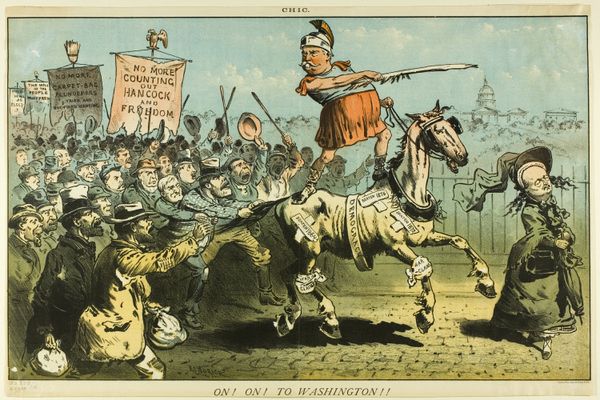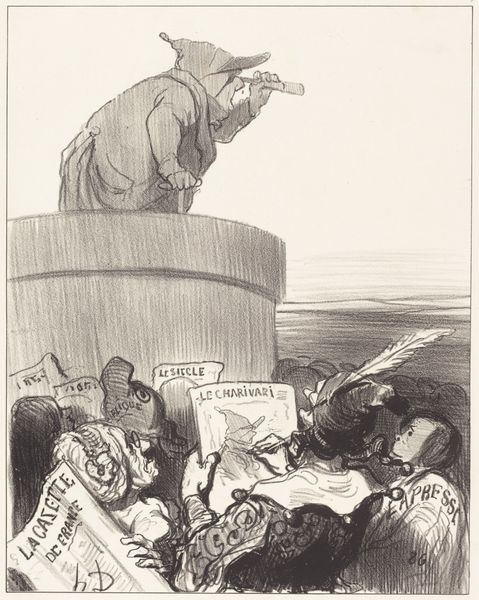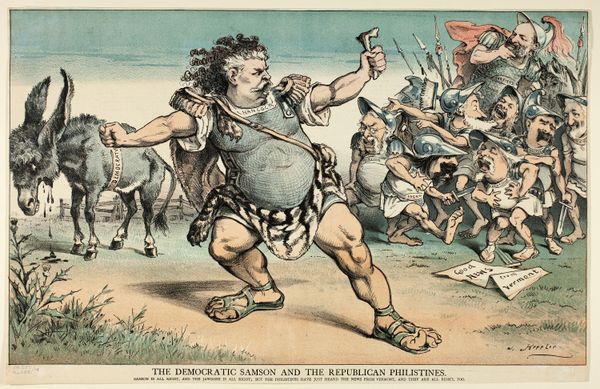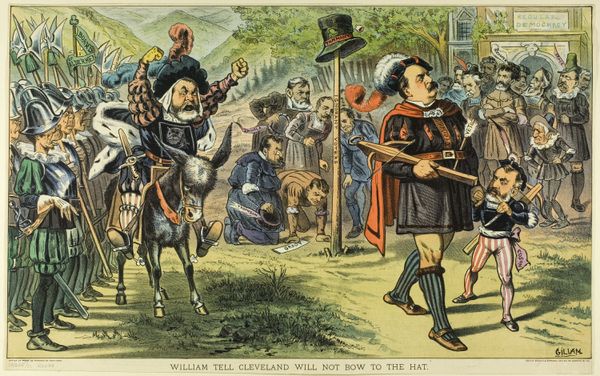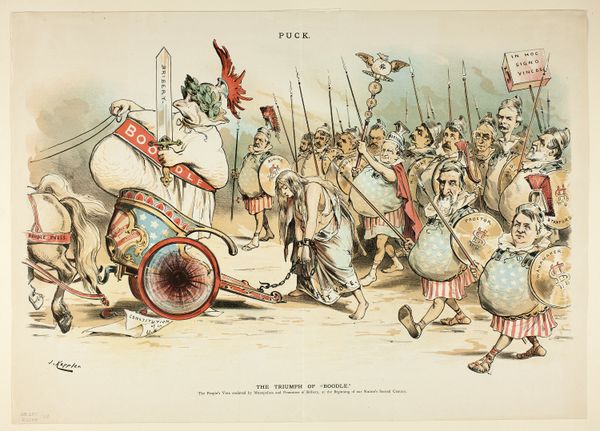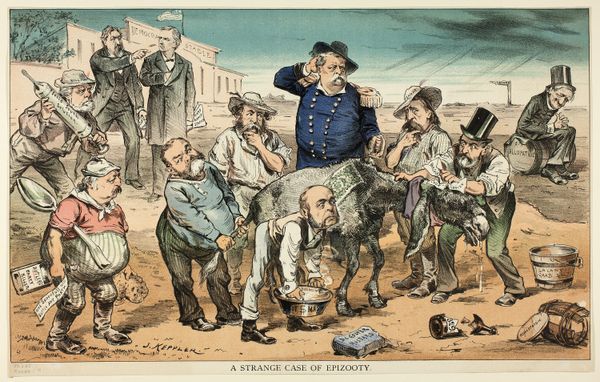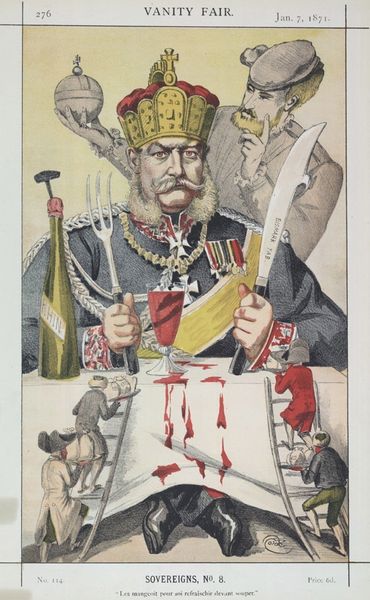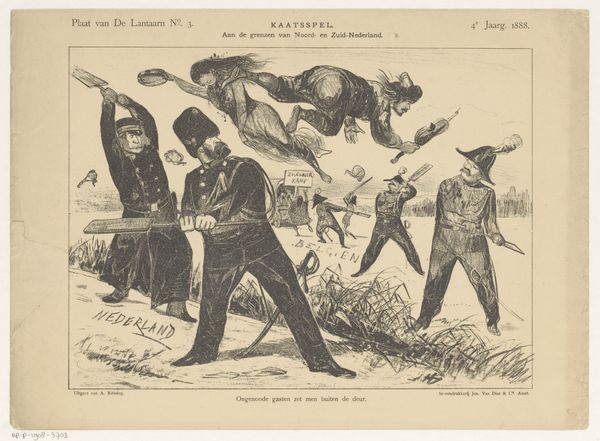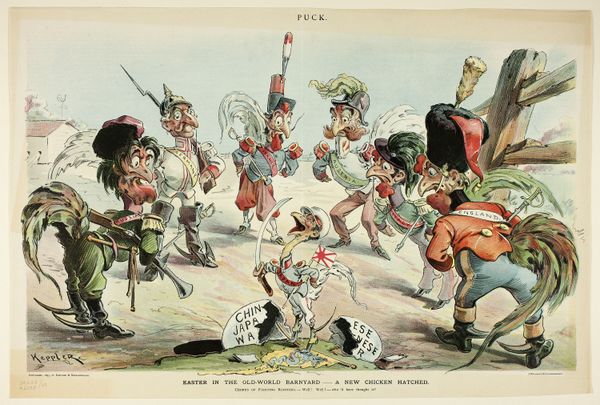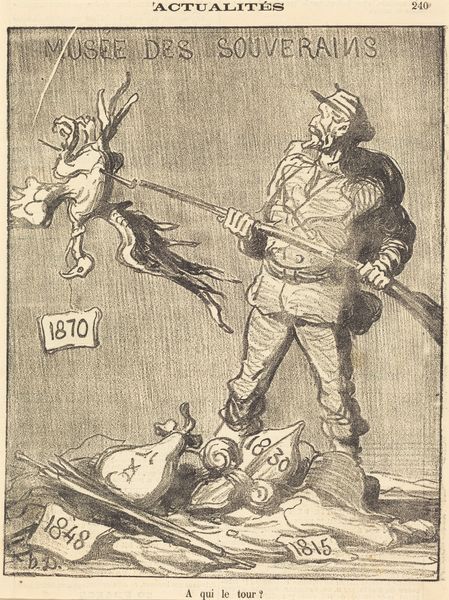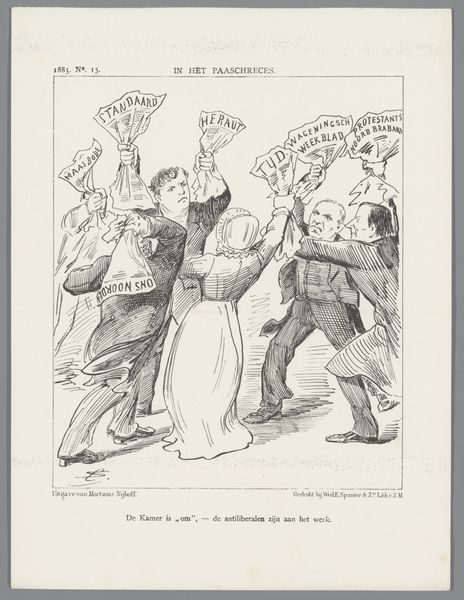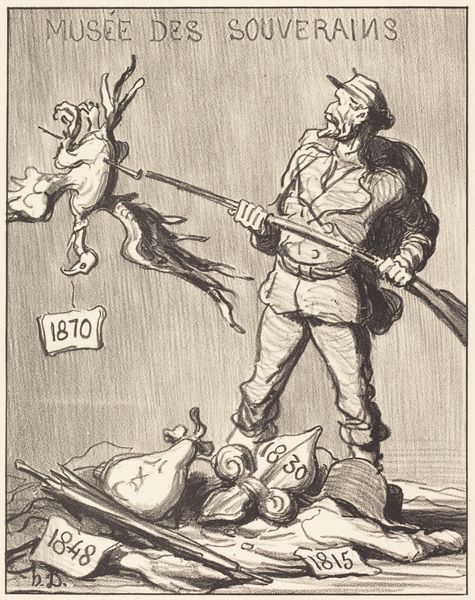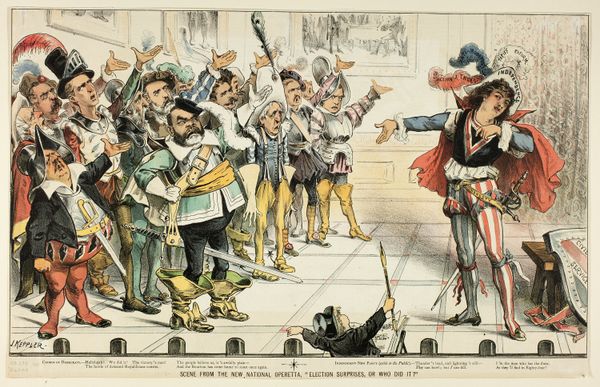
The Man Who Dares - and the Men who Dare N't, from Puck Possibly 1888
0:00
0:00
drawing, lithograph, print
#
drawing
#
narrative-art
#
lithograph
# print
#
caricature
#
caricature
#
symbolism
#
genre-painting
Dimensions: 355 × 505 mm
Copyright: Public Domain
Editor: This lithograph, "The Man Who Dares - and the Men who Dare N't" by C. Jay Taylor, probably dates to 1888. It's a pretty busy scene, a caricature really, and the overall tone feels very confrontational and quite critical of… well, I'm not entirely sure. What do you see in this piece? Curator: I see a powerful visual commentary on the relationship between the United States and Great Britain at the time. Note the British lion being confronted by a man, presumably representing the US, brandishing a “retaliation message.” This act is juxtaposed with the "men who dare n't," figures representing inaction or perhaps a more cautious approach. The symbolism is rooted in political tensions, perhaps trade disputes, and a growing sense of American assertiveness on the global stage. Editor: So, it’s about international relations. The figures behind the lion – they’re holding ropes, almost like they’re being pulled along? What do they represent? Curator: Exactly! Their subservient position highlights the perceived constraints and perhaps the economic dependencies that shaped their political will. They are visually tethered to the lion. Do you notice anything in their appearance or demeanor that speaks to their perceived weakness? Editor: They all seem rather… diminutive, maybe a little cowardly. The pointed hats feel like a deliberate attempt to mock them. It definitely feels like Taylor is taking a firm anti-British stance. Curator: It is precisely this active stance, this willingness to challenge established power dynamics, that gives the print its strength. The artist uses caricature to dissect the complex social and political power structures of the late 19th century. But does the print’s one-sidedness limit its lasting relevance? Editor: Possibly, but it certainly makes you think about the nuances of power and the different ways nations assert themselves. I see the caricature and symbolism employed here not just to depict events but to instigate debate. Curator: Indeed. These visuals encouraged reflection, dialogue and challenged the established world order, contributing to shifting perspectives on both national identity and international relations. A powerful testament to the role of art in shaping our understanding of the world.
Comments
No comments
Be the first to comment and join the conversation on the ultimate creative platform.
